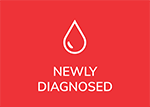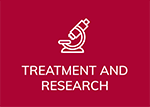The Bottom Line:
Once patients with chronic lymphocytic leukemia (CLL) or small lymphocytic lymphoma (SLL) have already been treated with two or more lines of therapy, including a BTK inhibitor, many are being retreated with the same class drug that they stopped earlier, resulting in suboptimal outcomes. Therefore, patients and doctors should explore alternative options or consider clinical trials with novel therapies.
Who Performed the Research and Where Was it Presented:
Dr. Farrukh Awan from the University of Texas Southwestern Medical Center and colleagues presented the results at the American Society for Hematology Annual Meeting in 2022.
Background:
Bruton tyrosine kinase inhibitors (BTKi; e.g., ibrutinib, acalabrutinib) and B-cell lymphoma 2 inhibitors (BCL2i; e.g., venetoclax) revolutionized the treatment of CLL and SLL. These drugs have been available for several years, and doctors are seeing more patients progressing after being treated with one or more of these therapies. So what happens when you stop responding to two of the major therapies available for treating CLL / SLL?
In this video, Dr. Alan Skarbnik, Director of the CLL program at Novant Health Cancer Institute in Charlotte, NC, interviewed Dr. Farrukh Awan, Professor of Medicine at the University of Texas Southwestern Medical Center. They discussed a study that used real-world data to see what treatments are being given to patients with CLL / SLL who have received 2+ lines of therapy and what their outcomes look like.
Methods and Participants:
This was a retrospective study using an extensive health database. It included patients diagnosed with CLL or SLL who had been treated with and discontinued 2+ lines of therapy [including 1) a BTK inhibitor or 2) both a BTK inhibitor and a BCL2 inhibitor] and started a third-line therapy.
Results:
- Cohort 1 included 405 patients who had previously been treated with a BTKi.
- Cohort 2 included 57 patients who had previously been treated with both a BTKi and a BCL2i.
- The majority of patients were 65 or older, and the median age was 71.
- 93-94% of patients were treated in a community setting rather than at an academic research center.
- Most patients (>60%) had not been tested for high-risk genetic features such as IGHV mutation status or TP53 mutation.
- In cohort 1, almost half of the patients were retreated with a BTKi (alone and in combination with other therapies) even though they had already stopped a previous BTKi.
- In cohort 2, only about 30% of patients received treatment with a different mechanism of action (e.g., PI3K inhibitor, chemoimmunotherapy) after stopping both a BTKi and a BCL2i. Instead, most were retreated with the same class of drug they had already stopped (both alone and in combination with other therapies).
- Some patients may have stopped previous therapies due to intolerance, but this is likely a tiny percentage of the patients.
- These findings indicate a limited exploration of alternative options or referral to clinical trials with novel therapies.
- When patients started on a third-line therapy after discontinuing a BTKi, the time until the next line of therapy was 11 months.
- When patients started on a third-line therapy after discontinuing a BTKi and a BCL2i, the time until the next line of therapy was six months.
- These “time to next therapy” measures are very short, indicating that what is being done is not working well.
- Overall survival from the start of third-line therapy was 33 months for cohort 1 (BTKi only) and 16 months for cohort 2 (BTKi and BCL2i)
Conclusions:
While BTKi and BCL2i have been wonderful additions to the CLL / SLL treatment toolbox, these results show that there is a significant unmet need for other options for patients who stop responding to these therapies. Therefore, both patients and their doctors should consider alternative options and may want to explore clinical trials with novel therapies.
Links and Resources:
Watch the interview on the abstract here:
You can read the actual ASH abstract here: Real-World Treatment (Tx) Patterns and Clinical Outcomes Among Patients (Pts) with Chronic Lymphocytic Leukemia/Small Lymphocytic Lymphoma (CLL / SLL) Who Received at Least 2 Prior Lines of Therapy Including Bruton Tyrosine Kinase Inhibitor (BTKi) and/or B-Cell Lymphoma 2 Inhibitor (BCL2i)
Take care of yourself first.
Ann Liu, PhD

















